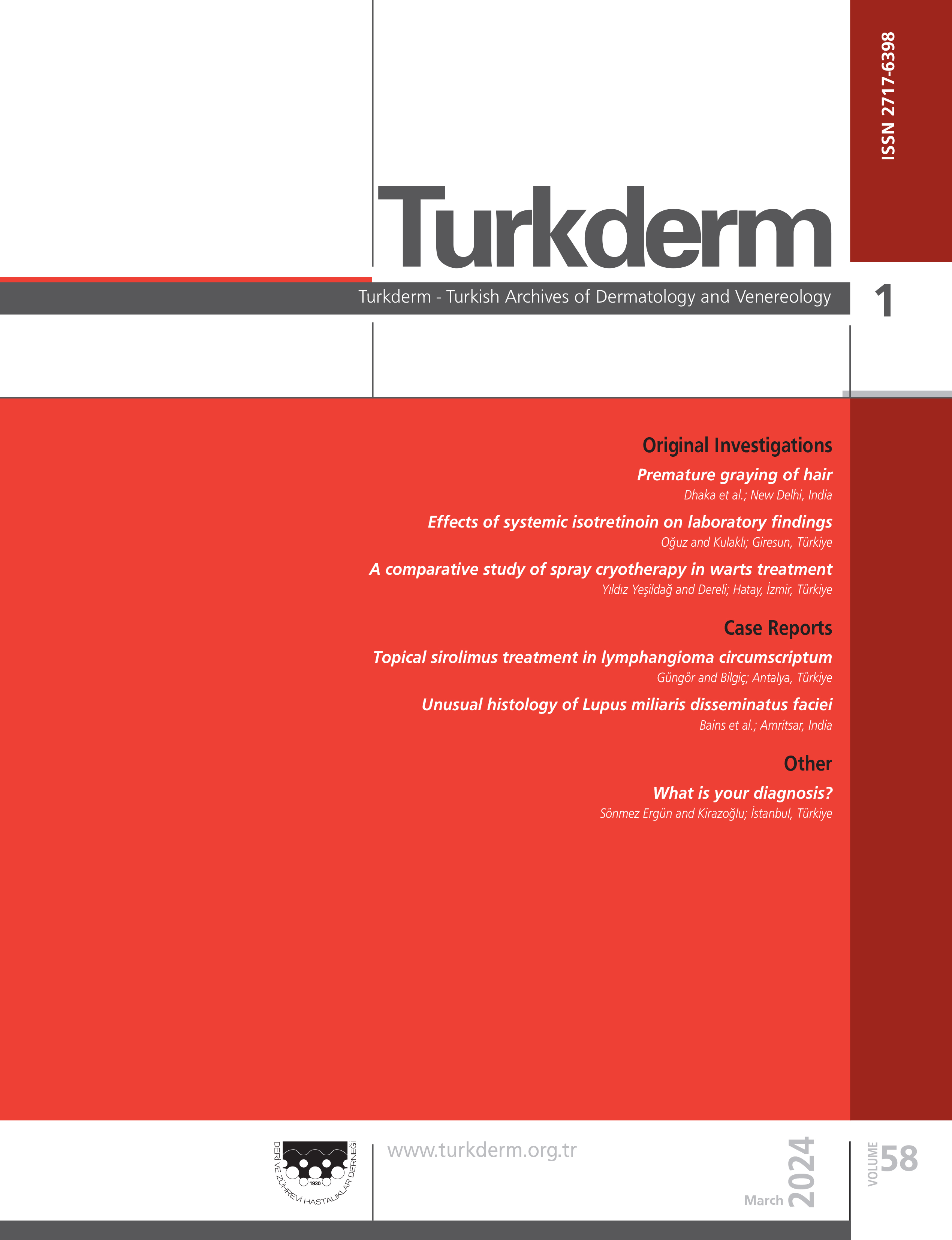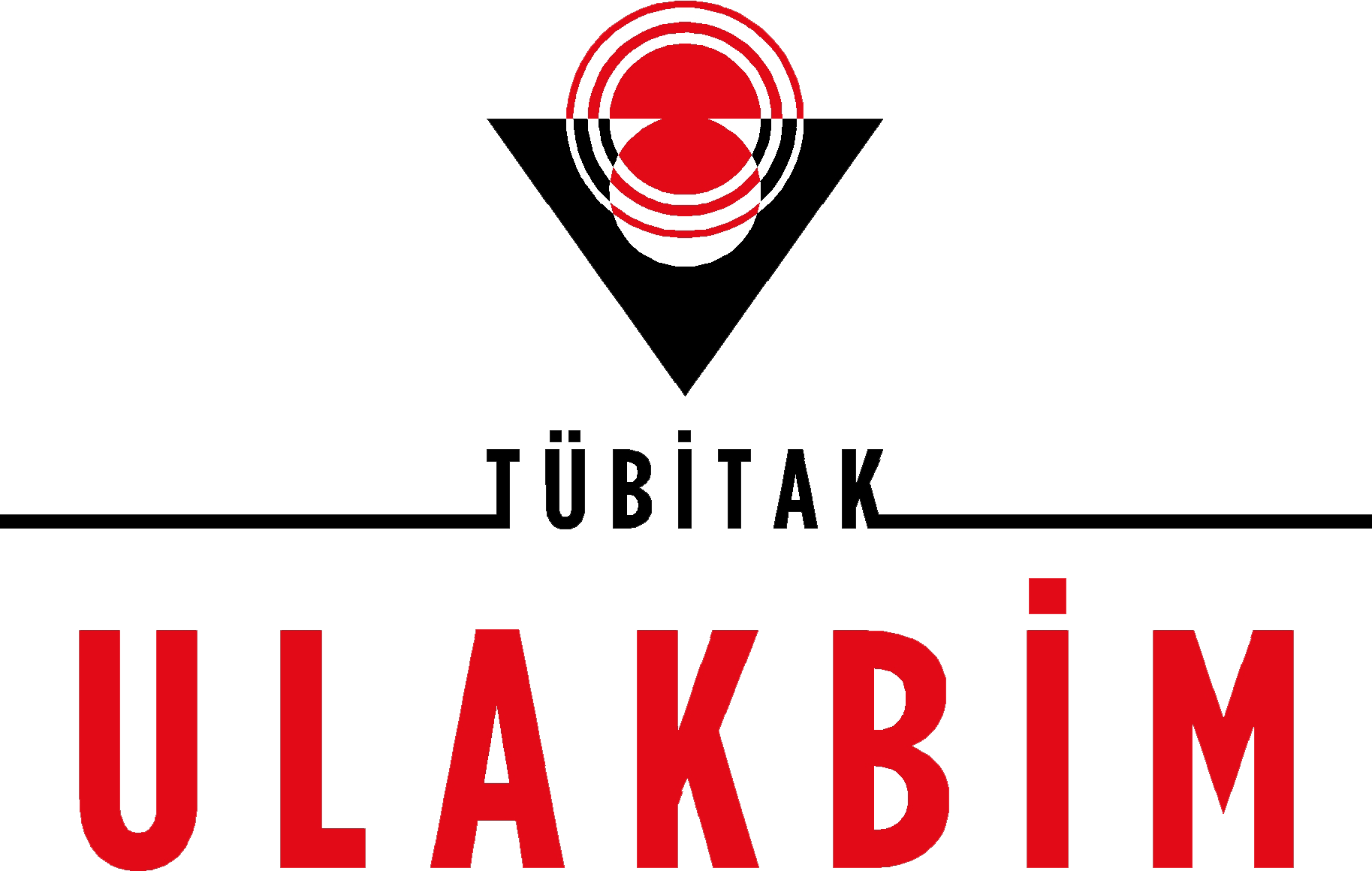Diagnostic value of histopathologic examination in alopecias
Deren Özcan1, Özlem Özen2, Deniz Seçkin11Skin And Venereal Diseases, Baskent University Faculty Of Medicine, Ankara, Turkey2Department Of Pathology, Baskent University Faculty Of Medicine, Ankara, Turkey
Alopecias are evaluated in two groups, namely noncicatricial type and cicatricial type. Cicatricial alopecias are generally irreversible due to the permenant damage to the hair follicles and as follicular epithelium is replaced by connective tissue in the late stages. In noncicatricial alopecia, the follicular epithelia is intact and hair regrowth is likely. The accurate diagnosis of alopecia subtypes which have different etiologies and occasionally result in permanent hair loss is of paramount importance to initiate the appropriate treatment in the early stages. Most of the subtypes of alopecia can be diagnosed with a detailed history and clinical evaluation. However, most of the disorders leading to alopecia present with nonspecific and overlapping clinical findings which alter over the course of the disease. In those instances, scalp biopsy and histopathologic evaluation is necessary to make or confirm the diagnosis. Transverse and vertical sections used for the interpretation of scalp biopsy specimens offer different advantages. Therefore, idealy, obtaining two 4 mm punch biopsy samples and combining both methods is suggested to enhance the diagnostic yield in patients with alopecia. In this review, the value of scalp biopsy in the diagnosis of subtypes of alopecia, the significance of evaluation of transverse and vertical sections in the histopathologic examination and the major histopathologic findings of the disorders involved in the etiology are described.
Keywords: Cicatricial alopecia, noncicatricial alopecia, transverse section, vertical section, histopathology, scalp biopsyAlopesilerde histopatolojik incelemenin tanısal değeri
Deren Özcan1, Özlem Özen2, Deniz Seçkin11Başkent Üniversitesi Tıp Fakültesi, Deri Ve Zührevi Hastalıklar, Ankara, Türkiye2Başkent Üniversitesi Tıp Fakültesi, Patoloji Anabilim Dalı, Ankara, Türkiye
Alopesiler, sikatrisyel olmayan tip ve sikatrisyel tip olmak üzere iki grupta incelenir. Sikatrisyel alopesiler, kıl folliküllerindeki kalıcı hasara bağlı olarak ve hastalığın son evresinde folliküler epitelyum bağ dokusu ile yer değiştirdiği için genellikle geri dönüşsüzdür. Sikatrisyel olmayan alopesilerde ise follikül epiteli sağlamdır ve yeni saç gelişimi mümkündür. Farklı etyolojilere sahip olan ve bazen kalıcı saç kaybına da neden olabilen alopesilere doğru tanının konması, uygun tedavinin erken dönemde başlanabilmesi açısından çok önemlidir. Pek çok alopesi alt tipine ayrıntılı öykü ve klinik değerlendirme ile tanı konması mümkündür. Ancak, alopesiye neden olan hastalıkların birçoğu hastalık ilerledikçe değişim gösteren, özgül olmayan ve birbiriyle iç içe geçen klinik bulgularla seyreder. Bu durumda kesin tanıyı koymak veya tanıyı desteklemek için skalp biyopsisi alınması ve histopatolojik inceleme yapılması gereklidir. Skalp biyopsi örneklerinin değerlendirmesinde kullanılan transvers ve vertikal kesitlerin farklı üstünlükleri vardır. Bu nedenle, alopesili hastalarda tanısal değeri artırmak amacıyla ideal olarak 2 adet 4 mmlik punch biyopsi alınarak her iki yöntemin birlikte kullanılması önerilmektedir. Bu derlemede alopesi alt tiplerinin tanısında skalp biyopsisinin değeri, histopatolojik incelemede transvers ve vertikal kesitlerin incelenmesinin önemi ile etyolojide yer alan hastalıkların başlıca histopatolojik bulguları anlatılmıştır.
Anahtar Kelimeler: Sikatrisyel alopesi, sikatrisyel olmayan alopesi, transvers kesit, vertikal kesit, histopatoloji, skalp biyopsisiCorresponding Author: Deren Özcan, Türkiye
Manuscript Language: Turkish






















